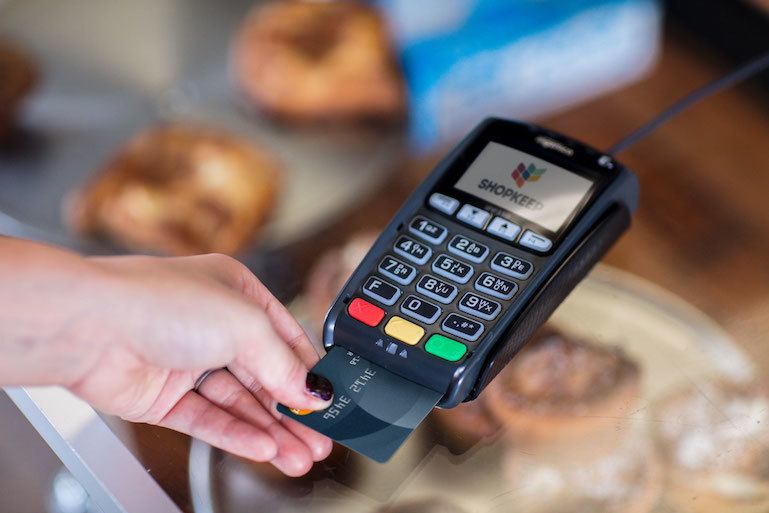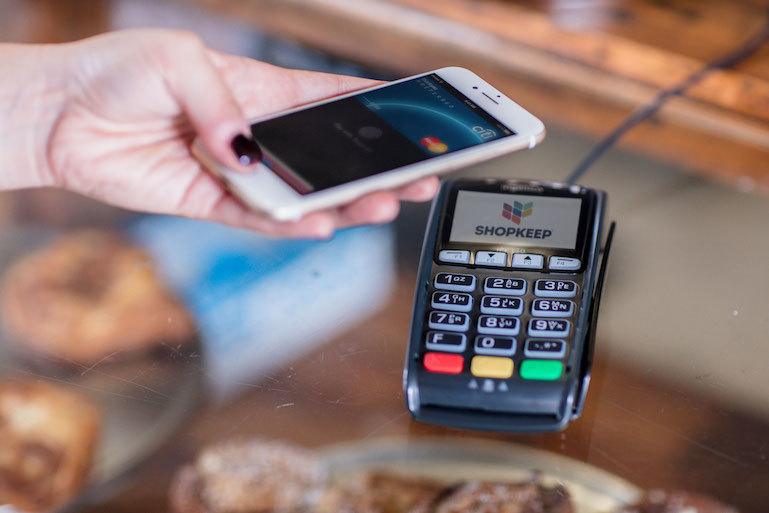
5 Simple Tips For Reducing Credit Card Processing Fees
Every merchant that accepts credit card and debit card payments have asked themselves, “How do I reduce my credit card processing fees?” at one point or another.
Payment processing is a complicated subject, especially if you aren’t an experienced business owner. Beyond its natural complexity, it’s not uncommon in the credit card processing industry for a payment processing company to be at least a little bit mysterious in how and why they charge you the way that they do.
In this post, we’ll help to pull back the curtain on how payment processing is priced and give you a variety of concrete tips for how to reduce credit card processing fees.
A Quick Guide to Payment Processing Pricing Models
The best way to identify the levers you can pull to reduce your processing fees is first to gain a solid understanding of each processing pricing model. There are three common ones, but before we walk you through them, we want to touch on one important concept: interchange rates.
Interchange rates are the rates charged by the credit card associations (Visa, Mastercard, American Express, Discover, etc.) to the issuing banks (the banks where you get your credit card). Every different type of transaction (swiped credit vs. chip debit vs. keyed-in credit) has its own interchange rate. These interchange rates are unavoidable and non-negotiable. For our purposes, they can be thought of as the starting point for each of the main credit card processing models.
Flat Rate Processing
In general, with flat rate processing, you pay the same rate for all credit card transactions you run. There’s some variability in the exact rate you pay, with EMV chip cards typically incurring a lower charge than a keyed-in transaction. However, this variability isn’t unique to flat rate processing.
With this variability in mind, you can expect to pay a transaction fee of 2.5% to 3.5% per transaction. It’s also common for processors to tack on a per transaction charge, usually around $.10.
The most significant benefit you can expect from going with a flat rate processor is simplicity. As we’ll touch on when we discuss other pricing models, the majority of processors are going to charge you a wide variety of different rates depending on the types of charges you’re running. Paying the same flat rate for every transaction makes forecasting month to month expenses easier, and your monthly statement will be straightforward. Because of this simplicity, flat rate processing is most often used by new business owners and merchants with a low transaction volume.
The downside of flat rate processing is that you don’t get any insight into the factors that go into the rate you pay. This gives you little room for negotiating better pricing. It’s likely that the only way you’ll get a better rate from a flat rate processor is if your business grows and you start doing enough volume to qualify for one of their “enterprise” plans.
SEE ALSO: Is Square Credit Card Processing a Good Deal for My Business?
Tiered Pricing
The tiered pricing model represents the next step up in pricing complexity. Instead of paying just one (or two) flat rates, a merchant’s charges can potentially fall into one of a dozen or more different tiers, each with their own rate.
Each tier is made up of a variety of different interchange rates. With the simplest tiered pricing plans, you will see three common bundles Qualified, Mid-Qualified, and Non-Qualified. Pricing for each of these bundles will include a variety of interchange rates, with the processor’s markup added to each. For example, a bundle could look like the following:
- Interchange fee: 1.00% + $.10 per transaction
- Processor markup: .74% + $.15 per transaction
- Bundle Price: 1.74% + $.25 per transaction
It’s pretty easy to see that there’s a substantial markup charged by the processor or merchant account provider on top of the wholesale interchange rate. Despite this, there are some positives to tiered pricing over flat rate pricing.
Choosing a processor or merchant services provider with tiered pricing can save you money over going with a flat rate processor. As our example above indicates, flat rate processing is notorious for adding exorbitant markups to interchange fees. While tiered pricing follows a similar model, there’s some variability, allowing you to save some money on processing.
The downside of tiered pricing is that there’s still a sizable amount of markup to deal with, so it isn’t the cheapest option. Processors typically hide which charges fall into the Qualified, Mid-Qualified, and Non-Qualified buckets as well. This makes it challenging to understand pricing so that you can negotiate better rates.
Interchange Plus Pricing
Interchange plus pricing is hands down the most affordable and transparent payment processing pricing model. With this model, you’ll pay the interchange fee directly from the credit card companies instead of the processor paying it on your behalf as they do with flat rate and tiered pricing. The processor will then add a flat markup on top of the interchange rate, which will not change regardless of the type of charge.
There are many reasons why interchange plus pricing is the smarter choice for most merchants, but the two big ones are cost savings and transparency. It’s hard to separate the two from one another. With interchange plus pricing, you know exactly what you’re paying for. This forces processors to compete on price, because they can’t hide behind tiers or a flat rate.
Move to a New Processor
With all of the above in mind, our first tip for reducing credit card processing fees is to look at your statement and determine if you’re working with a flat rate or tiered price processor. You could potentially get lower rates by merely moving to an interchange plus processor.
Reduce Non-Processing Fees
One of the unfortunate realities of working with a payment processor is that there are dozens of fees you’ll potentially pay outside of your standard per transaction charges. For example, you might need to pay:
- Account Maintenance Fee – a monthly or annual fee to keep your account open.
- Minimum Processing Fee – a fee you pay if you don’t meet the processing minimums for your account.
- Terminal Rental/Lease Fee – A monthly fee for renting or leasing your credit card terminal.
This is just scratching the surface. There are also a variety of one-time fees associated with creating or canceling an account. On another note, it’s possible that your processor has some hidden fees that you don’t even know about. Paying as few of these fees as possible is ideal. So, besides moving to an interchange plus processor, the next best way to reduce your credit card processing fees is to move to a processor with fewer of these one-time and fixed fees.
SEE ALSO: How to Accept Credit Card Payments—The Ultimate Guide
Negotiate with Your Processor
If you’re happy with your processor and don’t want to move, another tip is to try to negotiate a better rate. Like any negotiation, it’s helpful if you have some kind of leverage to strengthen your bargaining position. A typical example is if your transaction volume has increased since signing up with your processor. Another example is if you signed a contract and are coming up on renewal.
In the first example, you could potentially negotiate a lower markup, because the processor will make up any dip in their revenue through the increased volume you’re transacting. This is especially true if you have solid forecasts that project continued growth. In the second example, if you signal that you’re considering other processors, yours may make you an offer that can save you money.
They might lower their markup, or possibly eliminate some of your additional fees like a monthly account maintenance fee.
Optimize Transactions Types
Regardless of your processor or merchant services provder, you’re going to pay more for certain transaction types. For example:
- Debit typically costs less than credit
- Swiped transactions usually cost less than keyed-in transactions
- EMV typically costs less than swiped transactions
As a merchant, you can’t control what payment methods your customers prefer or have in their wallet on any given day. However, it’s not uncommon for merchants to incentivize or ask their customers to pay with a specific method. For example, when pumping gas, you might see a different price for cash vs. credit.
Pricing products differently based on payment method is a somewhat dubious tactic, but there are ways that you can steer your customers in the direction you want. For example, clear signage or a friendly word from a cashier can make it clear you would prefer that shoppers pay with a particular method.

Similarly, ensuring that you have the right payments hardware can help here also. EMV almost always has a lower interchange rate than a swiped card. However, you can’t run EMV transactions if you don’t have an EMV capable reader, so ensuring you have the right payments hardware is the best first step to take with this initiative.
Lastly, you’ll want to avoid keying in transactions whenever possible. Not only do these transactions typically feature the highest interchange rate, but they expose you to increased instances of fraud and the burden of paying a chargeback. Keying in a card number circumvents many of the security and authorization processes built into credit cards, which is why fraudster prefer paying this way with stolen cards. oh
Settle Transactions As Soon As Possible
Another operational tip that can help you lower your credit card processing rate is to settle transactions as quickly as possible. It’s common for many small businesses to do this after close-of-business. But after a long shift, it can be easy to put this off to the next day or two. However, businesses can typically expect to get the best interchange rate if they settle charges within 24 hours.
There are a variety of different ways to save money on credit card processing. However, much like personal budgeting, it’s often the more significant change that net the best bang for your buck. Moving to an apartment with cheaper rent is likely going to save you a lot more money than giving up your daily coffee habit. So if you genuinely want to save on processing fees, it’s likely that the first thing you’ll want to do is look for a different processor and move down our list from there.
Want to try ShopKeep for yourself?
Just answer a few easy questions.
Need help finding the right point of sale?
Just complete the form. We’ll call you right back to explain how ShopKeep can work for you.
Hit the ground running.Sprinting, in fact!
Read our free, comprehensive guide, Small Business 101, to learn all you need to know about starting a thriving business.

